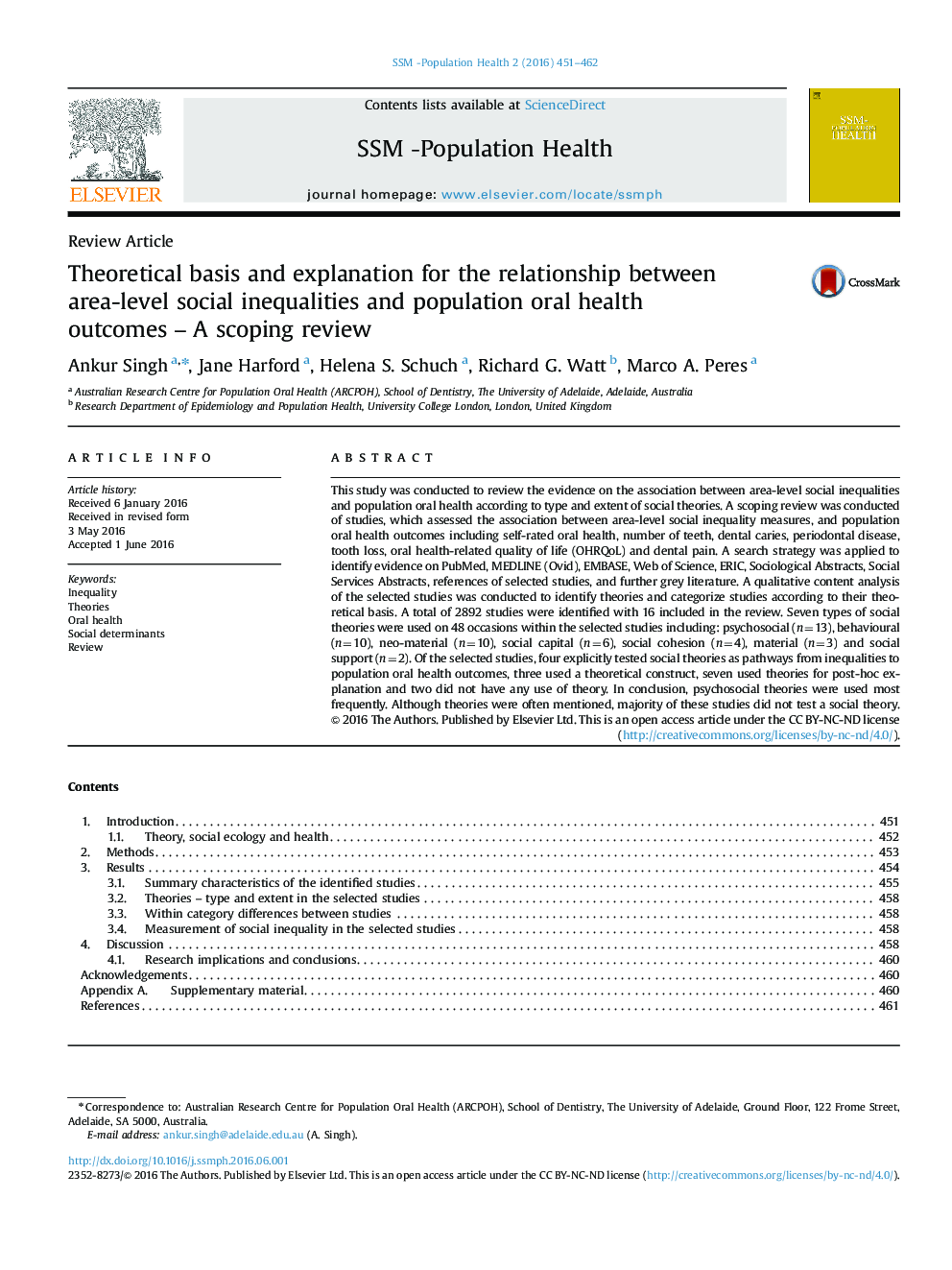| کد مقاله | کد نشریه | سال انتشار | مقاله انگلیسی | نسخه تمام متن |
|---|---|---|---|---|
| 1092351 | 1487260 | 2016 | 12 صفحه PDF | دانلود رایگان |
• Evidence suggests area-level social inequalities are detrimental to population oral health.
• The use of socio-epidemiologic theories in such studies is not clear.
• Deductive content analysis was adopted to identify theories and their application.
• Psychosocial theory was the most explicitly named and tested theory in the studies reviewed.
• Overall, four out of sixteen selected studies explicitly tested theories.
This study was conducted to review the evidence on the association between area-level social inequalities and population oral health according to type and extent of social theories. A scoping review was conducted of studies, which assessed the association between area-level social inequality measures, and population oral health outcomes including self-rated oral health, number of teeth, dental caries, periodontal disease, tooth loss, oral health-related quality of life (OHRQoL) and dental pain. A search strategy was applied to identify evidence on PubMed, MEDLINE (Ovid), EMBASE, Web of Science, ERIC, Sociological Abstracts, Social Services Abstracts, references of selected studies, and further grey literature. A qualitative content analysis of the selected studies was conducted to identify theories and categorize studies according to their theoretical basis. A total of 2892 studies were identified with 16 included in the review. Seven types of social theories were used on 48 occasions within the selected studies including: psychosocial (n=13), behavioural (n=10), neo-material (n=10), social capital (n=6), social cohesion (n=4), material (n=3) and social support (n=2). Of the selected studies, four explicitly tested social theories as pathways from inequalities to population oral health outcomes, three used a theoretical construct, seven used theories for post-hoc explanation and two did not have any use of theory. In conclusion, psychosocial theories were used most frequently. Although theories were often mentioned, majority of these studies did not test a social theory.
Journal: SSM - Population Health - Volume 2, December 2016, Pages 451–462
